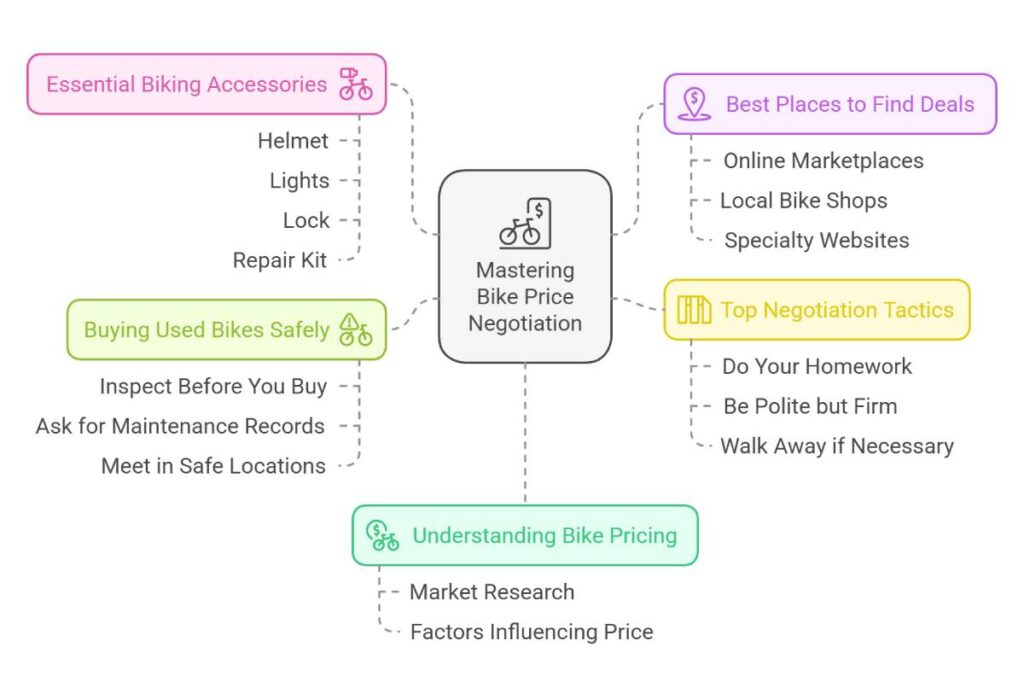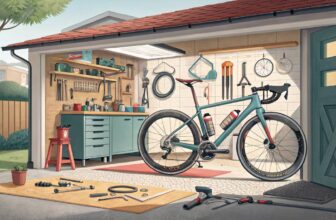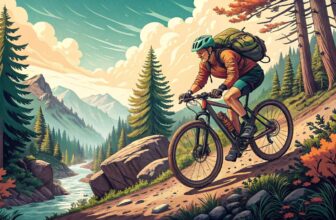Are you ready to ride into incredible savings on your next bike purchase? Navigating the world of bike pricing can feel like tackling a steep hill, but with the right strategies, you can master the art of negotiation and secure the best deals.
Whether you’re a seasoned cyclist or a newbie gearing up for your first ride, understanding the factors that influence bike prices and knowing where to find the best bargains are crucial.

Let’s embark on this journey to transform you into a savvy bike buyer, ensuring you get top quality without breaking the bank.
Understanding Bike Pricing
Kick off your journey as a savvy bike shopper by getting the lowdown on bike pricing. Let’s dig into what affects bike prices and clever spots to snag the best deals.
Factors Affecting Bike Prices
Bike prices zigzag based on a bunch of stuff. Being in the know helps when it comes to nailing a great bargain. Here’s what’s up:
| Factor | Description |
|---|---|
| Brand | Big-name brands make your wallet a little lighter ’cause of their trusty rep and high-end quality. Nobody’s tryna switch gears with a dud! |
| Quality and Materials | Costlier materials like carbon fiber, and whiz-bang tech like electronic shifting, have you shellin’ out more bucks. |
| Agreements | Your favorite local bike shop (LBS) might have some brand agreements which could tweak the price tags. |
| Markup | You’re lookin’ at a standard markup dance of 40-45% on high-end bikes and a cool 20% on budget buys. |
Where to Find Bike Deals
Whether it’s your first bike or time for an upgrade, knowing where the deals are is key:
- Local Bike Shops (LBS):
Make friends with the crew, and you might score some sweet discounts. Show up often, chat ’em up, and stay loyal for killer savings. - Online Retailers:
Online shopping is your buddy for killer sales and promos—you’ll find a stash of such goodies on our best bikes by price guide. - Bike Clearance Sales:
Both online and physical stores have cleared out sales for last year’s models. Sign up for newsletters to catch a whiff of the next big sale. Our bike clearance sales page is your treasure map. - Bike Auctions and Classifieds:
Scan places like Craigslist, Facebook Marketplace, and eBay for second-hand gems. Our bike auction guide dishes out the best tips. - Local Events:
Scope out community bike sales or swap meets—they’re often goldmines for thrifty finders. Just make sure to get a good look at what you’re buying. Use our used bike inspection checklist as your compass. - Big-Box Retailers:
Wallet-friendly bikes are up for grabs at places like Walmart and Target. They might not have the snazziest options, but they’re just right for penny pinchers and newbies.
Get these tricks under your belt to negotiate bike price like a pro. Armed with this know-how, you’ll shift into gear as a wise bike buyer. For more insights on timing your purchase, hop over to our when to buy bike section. Plus, you’ll find useful info in our bike brands comparison and bike price tracking resources.
Tips for Negotiating Bike Prices
Understanding how to haggle over a bike’s price wisely can help you save big bucks. Here’s some real-world advice for newbie bike buyers, folks looking to upgrade, and those forever chasing a bargain.
Figuring Out a Fair Price
Before you even think about haggling, get a solid idea of what the bike’s worth. This piece of info is like the secret sauce for your bargaining game.
- Peek Online: Scope out online marketplaces or retailer sites to get a price range.
- Check Out Reviews: Dive into reviews of the bike model to see if it’s up to scratch (bike review research).
- Look at the Nuts and Bolts: Check out the bike’s parts and figure out how they bump up the price (bike component comparison).
- Eyeball Price Guides: Consult price guides for some quick info (bike price guide).
Making Nice with Sellers
Striking up a friendship with sellers, especially at your local bike hub, can help you snag a sweet deal.
- Be a Regular: Dropping by and chit-chatting with staff can build up some good vibes and loyalty.
- Pick Their Brain: Get recommendations, and you might score some discounts by showing you’re interested in their insights.
- Work Those Connections: Loyal customers often walk away with better prices and a little extra love.
Haggle Like a Pro
Use your bargaining smarts to get the best price on your new wheels.
- Start With the Facts: Arm yourself with data on the bike’s market value, latest offers, and discount trends.
- Play the Comparison Game: Use rival prices to your advantage (where to buy bikes).
- Take it for a Spin: Always take the bike for a test ride and give it a once-over before sealing any deals (how to test ride bike, document bike condition).
- Offer With Confidence: Make an offer that’s both firm and fair, based on all the legwork you’ve done.
| Haggle Moves | Must-Do Actions |
|---|---|
| Start With Facts | Peek at online prices, read up on reviews, consult guides |
| Play Comparison Game | Leverage rival prices for better offers |
| Take it for a Spin | Present a fair offer based on the findings |
| Offer With Confidence | Present a fair offer based on findings |
Mixing good research, friendly chats, and smart tactics can help you snag a deal on your bike. Use tools like bike frame sizing and when to buy a bike to smooth your journey.
Buying Used Bikes
Snagging a used bike can be a smart move for newbies, seasoned cyclists looking to upgrade, or anyone keeping an eye on their wallet. Here’s the scoop on finding the right price range and dodging potential blunders when hunting for a pre-loved ride.
Price Range for Used Bikes
Used bikes often offer more bang for your buck. According to our pals over at Trip of a Lifestyle, a good used bike usually goes for about $200 to $400. On the flip side, a shiny new version of similar quality might burn a $500 to $900 hole in your pocket. Check out this rundown for a quick comparison:
| Condition | Price Range |
|---|---|
| Used Bike | $200 – $400 |
| New Bike | $500 – $900 |
This wallet-friendly range makes used bikes a no-brainer for those wanting quality without the hefty price tag. Be on the lookout though: bikes under $200 might be more trouble than they’re worth, and those over $400 could have bells and whistles you don’t need unless you’re getting serious miles in.
Hop over to our bike price guide for a deeper dive into bike pricing.
Avoiding Pitfalls with Used Bikes
When you’re eyeing a used bike, there are a few things to keep in mind to ensure you’re not getting a raw deal:
- Face-to-Face Inspection: Check the bike yourself or send a biking buddy if you can’t. Make sure everything’s in tip-top shape—take a peek at the gears, brakes, and tires.
- Sneak in a Test Ride: Make sure you’re comfortable and feel good riding it. Our handy bike frame sizing guide might help, and we’ve got tips on how to test ride a bike too.
- Chat with the Seller: Don’t be shy! Ask about its history, repairs, tweaks, and why they’re parting with it. This helps spot any red flags and might even score you a better price.
- Check It’s Legit: Look up the serial number to confirm it’s not stolen. We’ve got a bike serial number check tool to help.
- Think Resale: Used bikes don’t lose much value once they’re used. You might get back what you paid if you decide to sell later on. More details are on Trip of a Lifestyle.
- Haggle the Price: Places like Craigslist, Facebook Marketplace, and eBay often leave room for negotiation. Mention any fixes or tweaks it needs when you’re bargaining. Check out our negotiation techniques for more tips.
- Get a Tune-Up: If it needs a little love, take it to a local bike shop. These shops don’t mind working on bikes bought elsewhere.
Dodging common blunders is as easy as visiting our bike buying mistakes guide, along with our used bike inspection checklist for a thorough rundown before you purchase.
Stick to these tips and you’ll snag a ride that meets both your budget and biking game. Enjoy the ride!
Negotiating with Local Bike Shops
Getting a good price at your local bike shop (LBS) involves a bit more than just asking for a discount. It pays to use a combo of charm and smart price comparisons to snag that great deal while keeping the shop folks on your side.
Leveraging Relationships
Having a buddy-buddy relationship with your local bike shop can lead to cool discounts and sweet deals on bikes and gear. A smile and a chat now and then can work wonders. Keep buying from the same shop and get to know the crew. They’ll be more likely to throw in a discount or two when they know you’re not just another face in the crowd.
| Worth Doing | What You Get |
|---|---|
| Be nice and respectful | Trust in spades, better deals in your pocket |
| Become a frequent flier | Loyalty perks might start rolling in |
| Chat up the staff | Strong rapport equals better bargaining power |
Stick around long enough, and you might also score first dibs on new gear, insider advice on repairs, and upgrade tips. If you’re all about saving some bucks, don’t miss our piece on bike clearance sales.
Using Competitor Prices
Bringing competitor prices to the table can be your ace in the hole. Hop around different bike shops, get the lowdown on prices and offers, and stack those quotes up. See if your LBS can take one for the team and beat or match those numbers. This not only helps you save but shows that you mean business.
| What to Do | What’s in Store |
|---|---|
| Sniff out prices at several shops | Spot the best deals like a pro |
| Flash those competitor prices | Bargain with a little muscle |
| Talk up extras like warranties | Make the deal even sweeter |
Price isn’t the whole story. Chat about extra perks—maybe an extended service plan, or some free gear like a fancy helmet or cool lights. Looking for more pointers before you buy? Check out what to keep an eye on with bike frame sizing and how to test ride the bike.
Purchasing Biking Accessories
When getting a new bike, don’t just focus on the bike itself. There’s a whole world of gear that’ll make your rides safer and more pleasant. Below, we’ll go through a list of must-haves and some clever tricks to save you a few bucks while you’re at it.
Essential Accessories Checklist
A well-equipped bike isn’t just about cruising smoothly. It’s about keeping you safe and ready for whatever the road throws at you. Here’s what every cyclist should have:
- Helmet: It’s the superhero cape for your noggin. Keeps you safe if you take a tumble.
- Bike Lights: Like eyes for your bike at night or in the fog.
- Tire Pump: Your tires need love too – keep ’em full and rolling smoothly.
- Bike Lock: So your two-wheeled buddy stays where you parked it.
- Water Bottle Holder: No one likes being parched after pedaling miles.
- Chain Lube: A little smooth talker for your bike chain.
- Tire Patch Kit: Because nobody enjoys walking a bike home.
- Bicycle Multi-Tool: The Swiss Army knife of biking fixes.
Want more about the cost of owning a bike? Cruise over to our bike ownership cost guide.
Cost-Effective Buying Strategies
Gearing up can hit the wallet pretty hard, but here’s how to make it less painful without skimping on quality:
Online Retailers
Sites like Amazon and eBay are browsing goldmines. They often have better prices because they don’t have those fancy store shelves to worry about. Check reviews, compare prices, and stroll through virtual aisles to grab a bargain.
Negotiating with Local Bike Shops
Your local bike shop isn’t just about racks and wheels with price tags. They’ve got knowledge and services you can’t download. Become a regular and who knows, they might shave a bit off the sticker price for you. Don’t be shy to haggle a bit – bring your charm and those online prices as backup.
Bundle Buying
The more, the merrier, right? Buying a handful of accessories at once might unlock bundle deals. Keep your eyes peeled and ask if they’ll throw in a discount for a bulk buy.
Sales and Clearance
Watch out for those big sales or clearouts, especially when fewer folks are thinking about biking. Shops want to move old stock, and that’s where you swoop in for some killer deals. For a detailed head’s up, pop into our When to Buy bike guide.
| Accessory | Average Cost (USD) |
|---|---|
| Helmet | 30 – 150 |
| Bike Lights | 20 – 100 |
| Tire Pump | 10 – 50 |
| Bike Lock | 15 – 60 |
| Water Bottle Holder | 5 – 25 |
| Chain Lube | 5 – 15 |
| Tire Patch Kit | 2 – 10 |
| Bicycle Multi-Tool | 10 – 40 |
Use these tips along with our guides on how to pay for bike and negotiate bike prices to become a savvy, money-smart biking accessory shopper.
Conclusion
Mastering the art of negotiating bike prices empowers you to make informed decisions and secure the best value for your investment. By understanding the key factors that influence bike costs—from brand reputation and quality materials to retailer markups—you can better navigate the pricing landscape.
Exploring diverse sources such as local bike shops, online retailers, clearance sales, and auctions opens up a myriad of opportunities to find unbeatable deals. Effective negotiation tactics, including thorough research, building rapport with sellers, and leveraging competitor prices, are essential tools in your bargaining arsenal.
Additionally, purchasing used bikes offers a cost-effective alternative without compromising on quality, provided you take necessary precautions like thorough inspections and test rides.
Equipping yourself with essential accessories and adopting cost-effective buying strategies further enhances your biking experience while keeping expenses in check. Armed with these insights and strategies, you’re well on your way to becoming a savvy bike buyer, ensuring every ride is both enjoyable and budget-friendly.
Remember, the right preparation and knowledge can transform your biking journey, making it as smooth as a well-tuned gear shift.
FAQs
How can I determine the fair price of a bike?
To determine a fair bike price, research online marketplaces, read reviews, compare bike components, and consult price guides. Understanding the market value ensures you negotiate confidently.
What are the best places to find bike deals?
The best places to find bike deals include local bike shops, online retailers, clearance sales, bike auctions, classifieds like Craigslist and eBay, and big-box stores such as Walmart and Target.
Is it better to buy a new or used bike?
Buying a used bike can offer significant savings and good quality, especially for beginners or those on a budget. However, ensure thorough inspections and consider the bike’s condition before purchasing.
How can I build a good relationship with local bike shop staff?
Frequent visits, friendly interactions, and consistent patronage help build rapport with local bike shop staff, increasing your chances of receiving discounts and special offers.
What accessories are essential for a new bike?
Essential accessories include a helmet, bike lights, tire pump, bike lock, water bottle holder, chain lube, tire patch kit, and a bicycle multi-tool to ensure safety and enhance your riding experience.
Final Thoughts
Embarking on the journey to purchase your next bike doesn’t have to be daunting or expensive. By equipping yourself with knowledge about bike pricing, understanding where to hunt for the best deals, and honing your negotiation skills, you can secure a quality bike that fits both your needs and your budget.
Remember, building relationships with local bike shops and exploring both new and used options can open up a world of savings and opportunities. Additionally, don’t overlook the importance of essential accessories that enhance your safety and riding experience without overspending.
Stay informed, be proactive, and utilize the resources and strategies outlined in this guide to make your bike-buying experience smooth and rewarding. Happy cycling!
Key Tips Around Negotiating Bike Prices
- Do Your Homework: Research bike models, prices, and reviews before visiting shops.
- Build Rapport: Establish a friendly relationship with sales staff to gain trust and better deals.
- Leverage Competitor Prices: Use quotes from other retailers to negotiate lower prices.
- Be Ready to Walk Away: Showing willingness to leave can motivate sellers to offer better deals.
- Consider Timing: Shop during clearance sales or end-of-season periods for maximum savings.
- Bundle Purchases: Buy accessories and bikes together to unlock bundle discounts.
- Inspect Used Bikes Thoroughly: Ensure the bike is in good condition and worth the investment.
- Use Online Tools: Utilize price tracking and comparison websites to stay informed on deals.
Recommended Biking Products and Accessories
- Helmet: Giro Aether MIPS Helmet – Combines safety with aerodynamic design.
- Bike Lights: Cygolite Metro Pro 1100 – Powerful front and rear lights for visibility.
- Tire Pump: Topeak Road Morph G – Lightweight and portable with dual-action functionality.
- Bike Lock: Kryptonite New York Fahgettaboudit U-Lock – High-security lock for peace of mind.
- Water Bottle Holder: Blackburn Outpost Bottle Cage – Durable and easy to mount.
- Chain Lube: Finish Line Dry Teflon Chain Lube – Keeps your chain smooth and protected.
- Tire Patch Kit: Park Tool CG-2 Patch Kit – Comprehensive kit for on-the-go repairs.
- Bicycle Multi-Tool: Crankbrothers M19 Multi-Tool – Versatile tool for various adjustments.
- Bike Computer: Garmin Edge 530 – Advanced tracking and navigation for serious cyclists.
- Cycling Gloves: Pearl Izumi Elite Gel Gloves – Enhance comfort and grip during rides.




